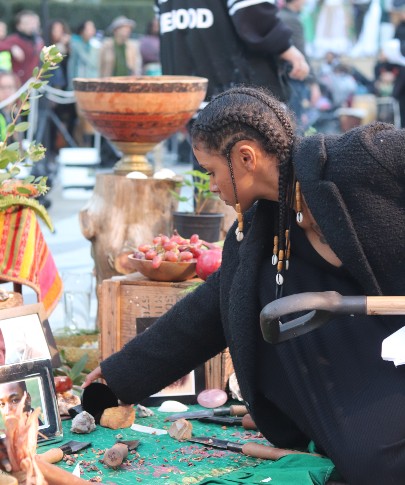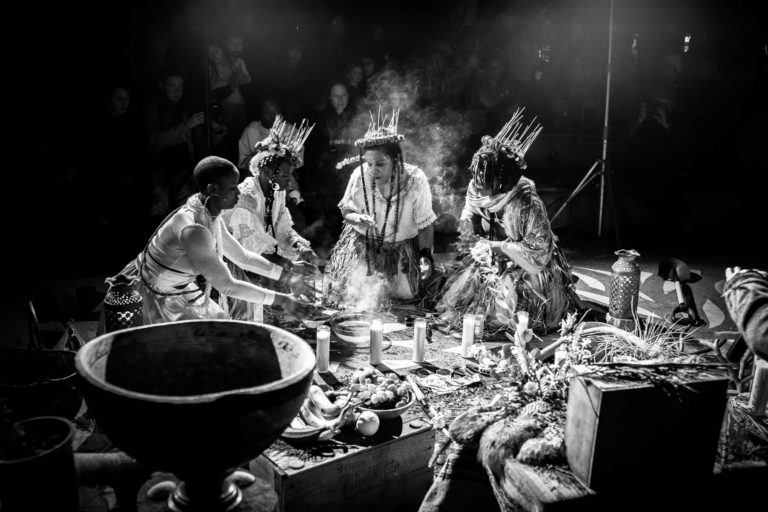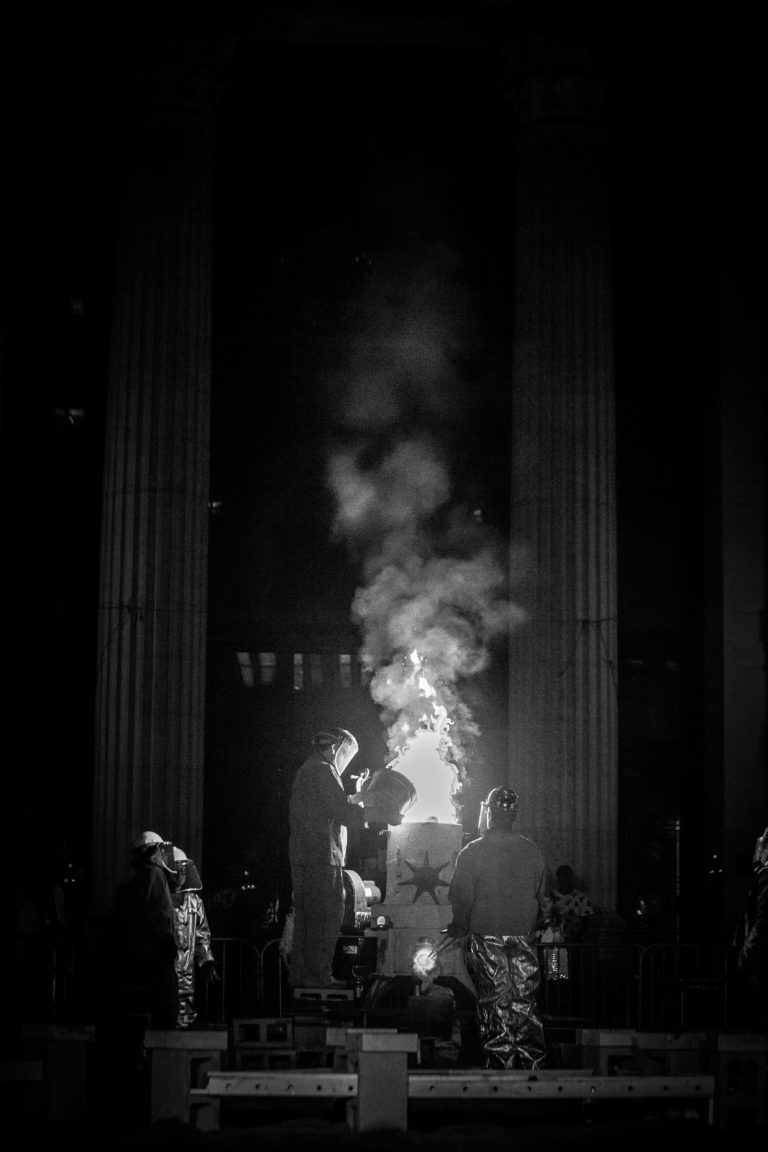2022 Corrina Mehiel Fellow
brontë velez, artist

Meet brontë (they/them): brontë’s work and rest is guided by the call that “black wellness is the antithesis to state violence” (Mark Anthony Johnson). As a black-latinx transdisciplinary artist, designer, trickster, educator and wakeworker, their eco-social art praxis lives at the intersections of black feminist placemaking, abolitionist theologies, environmental regeneration and death doulaship.
they embody this commitment of attending to black health/imagination, commemorative justice (Free Egunfemi) and hospicing the shit that hurts black folks and the land through serving as creative director for Lead to Life design collective and ecological educator for ancestral arts skills and nature-connection school Weaving Earth. they are currently co-conjuring a mockumentary with esperanza spalding in collaboration with the San Francisco Symphony and stewarding land with their partner in unceded Kashia Pomo territory in northern California.
Mostly, brontë is up to the sweet tender rhythm of quotidian black queer-lifemaking, ever-committed to humor & liberation, ever-marked by grief at the distance made between us and all of life—

S.O.U.R.C.E.: What values of the Corrina Mehiel Fellowship or S.O.U.R.C.E. stood out to you or resonated most with you and your work?
brontë: I felt most drawn to the Corrina Mehiel Fellowship through the reflection and commitment to art as social praxis; specifically, the ways art can collaborate with public space to transform how we relate to one another and the world. I felt really drawn to the inquiry that the praxis of intervention or invitations hold the gravity to change our relations. That site of initiating change–thinking of Octavia Butler’s God is Change here–is where we encounter the divine.
And I felt really drawn to the language of “S.O.U.R.C.E.” Source is the guiding prayer of my year in the midst of climate collapse. I’m committed to drawing my attention closer to source, closer to the land, to my own body, my ancestors at the end of the world as a divestment from late-stage capitalism. I felt really compelled by the language of S.O.U.R.C.E. studio, the alignment of the language and what that invited me into. I also felt drawn to the work to honor and be in the lineage of Corrina Mehiel’s work and the protection of our people. The interruption of violence is close to my heart and my work as someone who was largely initiated into my practice through my friend’s murder. So that work of transforming harm is a critical part of the alchemy practice I’m devoted to. I’m grateful to receive this fellowship and through it honor her life and work.

S: How would you describe your community and what sort of encounters with your work do you hope your community might experience?
b: I would describe my community as Black diasporic peoples and Black places. The ways Black folks are in coterminous relationships with their environments–specifically the ways that Black people are impacted in the wake of harm to land and also how the land is affected by the harm inflicted upon Black people.
I have experienced those patterns in many places where I have lived and where my work/attention has been situated–in Atlanta where I’m from, in Oakland where I moved to in 2017, in Puerto Rico/Boríken, which is my ancestral land. Right now my community is also deeply more-than-human because I’ve moved outside of a city, so I’m also in community now with goats and sheep and alpaca and chickens and forest. I am here to support protecting these lands, traditions and the folks indigenous to this land–especially now that Black and Indigenous liberation are tied up with one another.
I hope through my work that my communities get to experience the sovereignty of their attention. I think a lot of my work is thinking about how to support encounters with the miraculous — to instigate experiences that offer the wisdom that access to our attention permits us to be encountered by miracles. My miracle work has primarily been situated through my practice with public ceremonies and melting guns into otherwise. Now with S.O.U.R.C.E. and in relationship with my partner who works with prescribed fire, I’m thinking, “How do I support the rehabilitation of witnessing source fire, prescribed fire, through indigenous cultural burning? How do I facilitate the fires that are regenerative and resourceful?”

S: What role does curiosity play in your work and what are you curious about exploring in the year to come?
b: Curiosity is at the core of my practice. Childlike curiosity and play guides my relationship with my attention to re-encounter the land, especially as a descendant of enslaved black folks where the trauma of enslavement separated us from the land and created a complex relationship to the earth. Curiosity heals my relationship with the earth.
Being willing to observe and pay attention even if I don’t know the names of certain birds or all of the plants that I’m seeing is healing. The muscle of curiosity offers; Can I build this relationship if I don’t know the white scientific names of all these things? Can I still be close? Can I have a relationship on my own terms?
In the years to come and specifically this year, my curiosity is arcing towards regenerative grazing, working with sheep and goats, moving toward shepherding. I’m curious about how that’s going to change my art practice, especially around collaborating with their wool, fleece, milk, soap, spirits, humor, etc. I’m being drawn toward black diasporic fiber traditions and ritual garments. I know that relationship with those more-than-human kin is going to deeply change my craft as well.